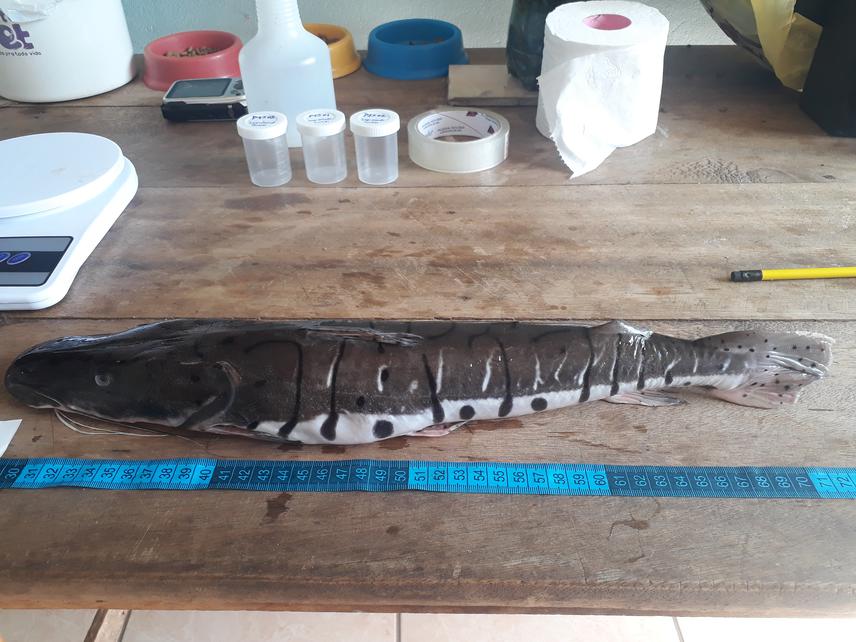Luciana Alves Pereira
I propose to study the migration of two species of catfishes in the Amazon Basin because they are highly important ecologically and economically and because they are highly threatened by overfishing and construction of hydropower dams. I will characterize the movement ecology of these catfishes by analysing the trace chemical composition of their otoliths, that record the chemical signature of the water that the fish live in as they grow and move between waters of different trace chemical composition. My analysis of the trace chemical composition of the otoliths will reveal when, where, and how far individual fish migrated.

I propose to study the migration of two species of catfishes in the Amazon Basin because they are highly important ecologically and economically, and because they are highly threatened by overfishing and construction of hydropower dams. I will study the migration of Pseudoplatystoma pucntifer and P. tigrinum, which are ecologically important because they transport food and energy to other species across ecosystems through their feeding and life-cycle movements, thereby promoting healthy ecosystem function and resilience (Hoye et al., 2014; Wilcove and Wikelski, 2008). These catfishes sustain fisheries that underpin income and food security across vast regions of the Amazon Basin. However, these species are highly threatened by poorly regulated fishing activities and construction of hydropower dams that block their migratory movements and thereby disrupt completion of their life cycles (Castello et al., 2013; Castello and Macedo, 2016; Finer and Jenkins, 2012). Despite these rising threats, no studies have demonstrated the migrations of these catfishes. Such studies are necessary to develop the scientific basis for reaching policy decisions and community buy-in to promote sustainable fishery management and biological conservation.
This project will clarify the migratory ecology of these threatened species of catfishes. I will characterize the movement ecology of these catfishes by analysing the trace chemical composition of their otoliths, their inner ear bones, that record the chemical signature of the water that the fish live in as they grow and move between waters of different trace chemical composition. As the otoliths grow larger, they deposit growth rings much like those of trees. As new material is added, the concentric zones will vary in chemical composition following the chemical composition of the surrounding water, providing a readable record of movements through the life of the fish. My analysis of the trace chemical composition of the otoliths of the two species will reveal when, where, and how far individual fish migrated.